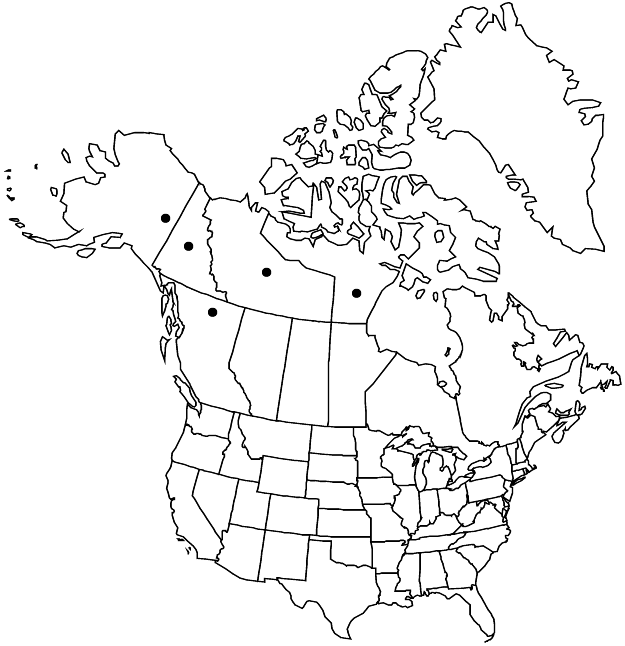Silene ostenfeldii
Sida 21: 888. 2004.
Plants perennial, densely cespitose; taproot stout, fleshy; caudex tightly branched. Stems 1–many, erect, simple, slender, 10–30 cm, glandular-pubescent. Leaves connate basally, blade ciliate at base, pubescent on both surfaces; basal numerous, ± petiolate, blade linear-oblanceolate, 1–5 cm × 1–5 mm, somewhat fleshy, apex ± acute; cauline in 1–3 pairs, sessile, blade linear to linear-lanceolate, 1–4 cm × 1–3 mm, apex ± acute. Inflorescences cymose, terminal, (1–) 3-flowered, rarely with 1–2 flowers at proximal nodes, bracteate, bracteolate; bracts and bracteoles leaflike, 2–10 mm. Pedicels usually shorter than calyx, rarely much longer, densely pubescent with purple-septate glandular-hairs but not viscid. Flowers: calyx prominently 10-veined, elliptic to campanulate, not inflated, not or slightly contracted at mouth, 8–9 × 3–5 mm in flower, 10–12 × 5–6 mm in fruit, to 2 times as long as broad, papery, veins green or purple, densely pubescent, with purple-septate hairs, lobes spreading, lanceolate-triangular, ca. 2 mm, margins purple-tinged, round, broad, membranous; corolla white to pink, clawed, ca. 11/4 times longer than calyx, claw equaling calyx, limb not differentiated from claw, obovate, emarginate to 2-lobed, shorter than calyx, appendages 2, ca. 1 mm; stamens equaling petals; styles 5, equaling petals. Capsules ovoid-ellipsoid, slightly longer than calyx, opening by 5 recurved teeth; carpophore shorter than 1 mm. Seeds brown, not winged, reniform, angular, less than 1 mm broad, finely papillate. 2n = 24, 48, 72.
Phenology: Flowering early summer.
Habitat: Gravelly tundra, rocky ledges, talus, river outwash, grassy areas
Elevation: 0-1800 m
Distribution

B.C., N.W.T., Nunavut, Yukon, Alaska, e Asia (Russian Far East)
Discussion
Silene ostenfeldii, an amphi-Beringian species, is very similar to S. involucrata subsp. tenella. However, it lacks the wing on the seeds, and its mature calyx tends to be more elliptic than campanulate. It may be confused also with S. sorensenis, but that species has larger seeds and calyces and is a sturdier plant with a denser, longer, somewhat woolly pubescence.
Selected References
None.